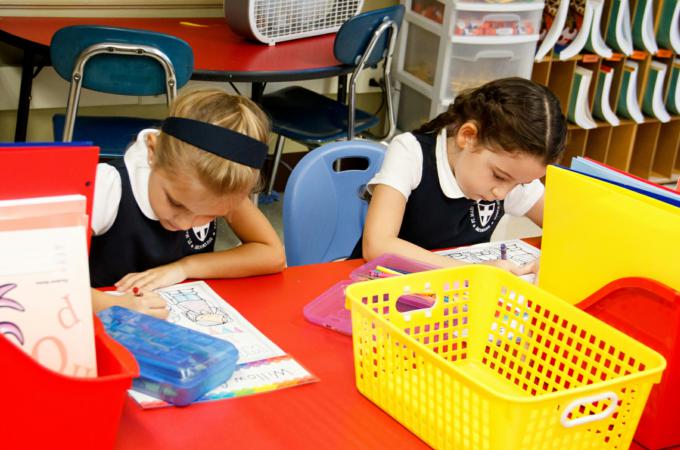Archdiocese's Catholic schools plan for on-time, in-person reopening
BRAINTREE -- While public school teachers have asked for additional time to prepare for the coming academic year, the Catholic schools of the Archdiocese of Boston intend to begin on time with live, in-person instruction.
Nearly all schools in Massachusetts, public and private, were ordered closed in March to help prevent the spread of the coronavirus. Initially, this precaution was only intended to last a few weeks. However, the closure was eventually extended for the remainder of the academic year, forcing schools to adopt online learning models while students stayed home.
While many public schools took weeks to transition to remote learning, the vast majority of Catholic schools in the archdiocese adapted their curriculum and communication methods over the course of the first weekend, March 14-15.
Gina Matthews, associate superintendent of academics and instruction, was a member of the Massachusetts Department of Elementary and Secondary Education's Return-to-School Working Group, which met on a weekly basis through May and June to plan possible programs for the summer and for the following school year. The DESE released initial school reopening guidelines on June 25.
Matthews said that all the group members agreed with the overarching goal: to resume in-person instruction with necessary safety precautions, in whatever way was best for each school. Because schools across the state vary in population, how those precautions are implemented will differ between various schools and cities.
"That's why these are guidelines, not mandates," Matthews said.
In a July 28 interview, Thomas Carroll, superintendent of schools for the Archdiocese of Boston, recalled that someone had asked him when the decision was made to reopen the archdiocesan schools.
"We actually didn't make a decision," he said, explaining that they were all hoping the state would allow them to open. As soon as the governor said schools could resume, they began to figure out how they would do so.
According to Carroll, no Catholic school principal considered not opening for in-person instruction in the fall.
"Our approach is, we want to be there for the families," Carroll said.
All schools have been asked by the state to have plans for three potential learning models: live instruction with the new safety precautions, a hybrid of in-person and remote instruction, and fully remote instruction. Having these three models ready will ensure continuity even if the circumstances of the pandemic change -- for instance, if an uptick in virus cases causes schools to close again.
Carroll said the Catholic schools will "do the best we can for as long as we can."
"We're open for in-person classroom instruction, and we're hoping that lasts as long as possible, because there's no substitute for a teacher and a classroom of kids all in the same place learning together," he said.
School buses will carry approximately 30 to 33 percent of their maximum capacity. This means that one student will sit in each seat made for three people.
Instead of having students go to different classrooms for special subjects, such as art, music, or physical education, students will stay in their main classrooms while teachers switch. This way, Carroll explained, if a student is sick, they will not contaminate more than one classroom. However, keeping these "cohorts" of students grouped off from each other becomes more difficult at the middle school and high school levels, which is why the guidelines allow for flexibility, Carroll said.
Though the state originally recommended distancing students six feet apart in classrooms, that minimum was reduced to three feet apart, close to the World Health Organization's standard of one meter. Students and teachers will need to wear masks, with the exception of children in second grade or younger.
Carroll stressed the responsibility of parents to keep children home when they are sick. He predicted that absentee rates will be higher for this reason.
The archdiocese has been training teachers in how to use technology to livestream or record their classes, so that sick or quarantined students can continue to receive instruction at home.
"Anybody who wants live in-classroom instruction can get it, and anyone who's not able to will be able to access it," Carroll said.
Matthews said that the Catholic school teachers are excited for the chance to be back together with their students again.
"They just want to be with the students in a faith-filled learning environment," she said.
Carroll said, "One of the hallmarks of Catholic school is the sense of community that we build within the schools. And it's a lot easier to build community when you're all together than doing it over a laptop."



















